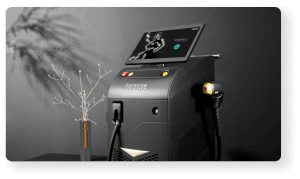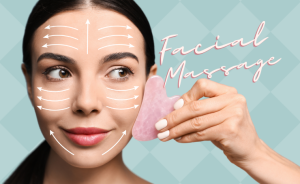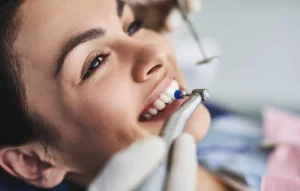Non-invasive body contouring techniques are cosmetic procedures designed to reduce fat or reshape the body without the need for surgery. These techniques have gained popularity as they offer a safer and less invasive alternative to traditional surgical procedures like liposuction. For individuals seeking professional services in the UAE, body contouring Dubai is a widely searched and practiced option that provides access to advanced technologies in aesthetic care. Here are some common non-invasive body contouring techniques:
Cryolipolysis (CoolSculpting): This technique uses controlled cooling to target and freeze fat cells, causing them to undergo a natural cell death process called apoptosis. Over time, the body eliminates the dead fat cells, resulting in a reduction of fat in the treated area.
Laser Lipolysis (Laser Fat Reduction): This technique uses laser energy to heat and liquefy fat cells, which are then naturally eliminated by the body’s lymphatic system. Laser lipolysis can also stimulate collagen production, leading to skin tightening in the treated area.
Radiofrequency (RF) Energy: RF energy is used to heat the deeper layers of the skin, promoting collagen production and tightening loose skin. RF-based devices can also target fat cells, causing them to shrink and be metabolized by the body.
High-Intensity Focused Ultrasound (HIFU): HIFU delivers focused ultrasound energy to specific depths in the body, targeting fat cells and causing them to heat up and rupture. The destroyed fat cells are then naturally eliminated by the body.
Low-Level Laser Therapy (LLLT): LLLT uses low-energy laser light to penetrate the skin and stimulate fat cells, causing them to release stored fat. The released fat is then metabolized and eliminated by the body.
Vacuum-Assisted Precise Tissue Release (VAPoR): This technique combines radiofrequency energy with vacuum-assisted massage to break down fat cells and improve lymphatic drainage, resulting in a reduction of fat and improved skin texture.
These non-invasive approaches are often combined with personalized body treatment programs to enhance results and promote overall contouring and skin health.
It’s important to note that the effectiveness of these techniques can vary depending on factors such as the individual’s body composition, the specific device used, and the treatment protocol. It is advisable to consult with a qualified medical professional to determine the most appropriate body contouring Dubai solution for your specific goals and needs.
What is Non-invasive body contouring?
Non-invasive body contouring refers to cosmetic procedures or treatments that aim to reshape the body, reduce fat, or improve the appearance of the skin without the need for surgery. Unlike invasive procedures like liposuction or tummy tucks, non-invasive body contouring techniques do not involve incisions, anesthesia, or significant downtime.
Non-invasive body contouring treatments typically use various technologies to target specific areas of the body, such as the abdomen, thighs, buttocks, or arms. These treatments can help address concerns like stubborn fat deposits, cellulite, loose skin, or lack of muscle tone.
The goal of non-invasive body contouring is to provide noticeable improvements in body shape and appearance without the risks, discomfort, or recovery time associated with surgical procedures. These techniques are generally considered safer and more suitable for individuals who prefer a less invasive approach or who are not good candidates for surgery due to medical reasons.
Non-invasive body contouring techniques can include cryolipolysis (such as CoolSculpting), laser lipolysis, radiofrequency (RF) energy, high-intensity focused ultrasound (HIFU), low-level laser therapy (LLLT), and vacuum-assisted precise tissue release (VAPoR), among others. These treatments work by targeting fat cells, stimulating collagen production, tightening the skin, or improving lymphatic drainage to achieve the desired body contouring effects.
It’s important to note that while non-invasive body contouring treatments can provide noticeable results for many individuals, the degree of improvement can vary depending on factors such as the person’s body composition, lifestyle habits, and the specific technique used. Consulting with a qualified medical professional is crucial to determine the most suitable non-invasive body contouring approach for an individual’s specific goals and needs.
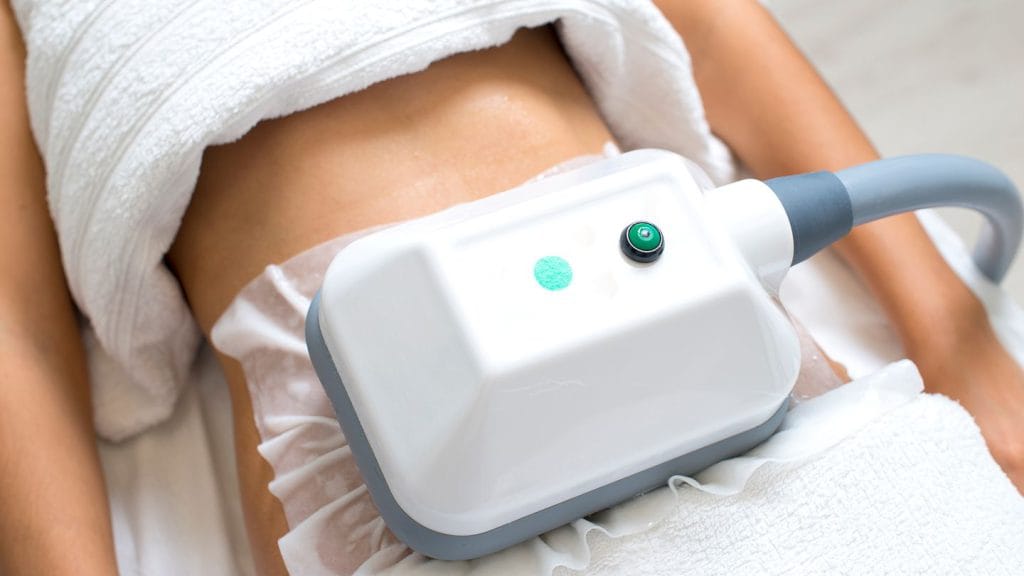
CoolSculpting is a non-invasive body contouring treatment that uses cryolipolysis to reduce stubborn fat deposits in specific areas of the body. It is a trademarked brand name for a procedure that has gained popularity in the cosmetic industry.
During a CoolSculpting session, an applicator is placed on the targeted area of the body, such as the abdomen, thighs, flanks, or arms. The applicator uses controlled cooling to freeze the fat cells underneath the skin without harming the surrounding tissues. The extreme cold temperature causes the fat cells to undergo apoptosis, a natural cell death process.
Over time, the body’s lymphatic system gradually eliminates the dead fat cells from the treated area. The fat cells are metabolized and expelled from the body, resulting in a reduction of fat in the treated area.
CoolSculpting is based on the principle that fat cells are more sensitive to cold temperatures than the surrounding tissues, such as the skin, muscles, and nerves. By precisely controlling the cooling temperature and duration, CoolSculpting can target and destroy fat cells while leaving the surrounding tissues unharmed.
The treatment typically takes about 35 to 60 minutes per targeted area, and multiple sessions may be required to achieve the desired results. CoolSculpting is generally well-tolerated, and most people can resume their normal activities immediately after the procedure, as it does not require anesthesia or downtime.
It’s important to note that CoolSculpting is not a weight loss solution or a substitute for a healthy lifestyle. It is intended for individuals who have localized areas of stubborn fat that are resistant to diet and exercise. Consulting with a qualified healthcare provider is essential to determine if CoolSculpting is a suitable option and to develop an appropriate treatment plan based on individual needs and goals.
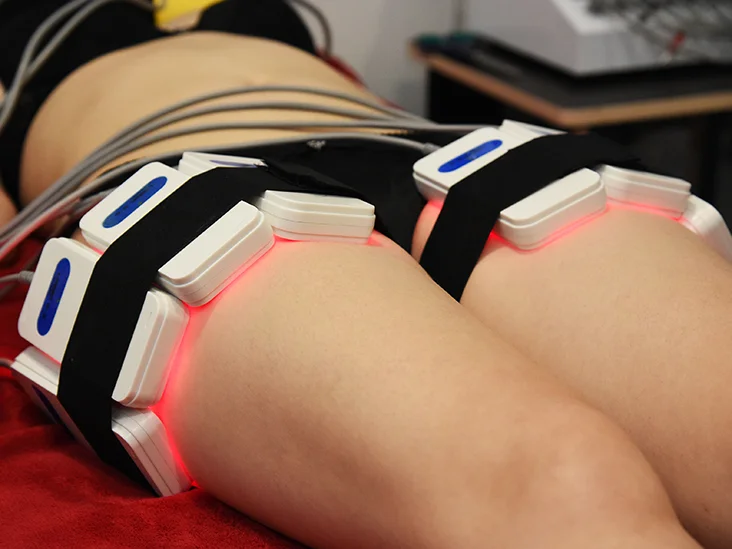
What is Laser Lipolysis?
Laser lipolysis, also known as laser-assisted liposuction or laser fat reduction, is a non-invasive or minimally invasive body contouring procedure that uses laser energy to target and remove unwanted fat deposits.
During a laser lipolysis procedure, a small cannula (thin tube) that contains a laser fiber is inserted into the targeted area of the body. The laser emits energy that heats and liquefies the fat cells, causing them to rupture. The liquefied fat is then either suctioned out through the cannula or naturally eliminated by the body’s lymphatic system.
The laser used in this procedure can have different wavelengths, such as Nd:YAG, diode, or erbium lasers, depending on the device and technology used. The laser energy can also stimulate collagen production in the skin, leading to skin tightening effects.
Laser lipolysis is typically performed under local anesthesia, and the procedure can be done on various body areas, including the abdomen, waist, hips, thighs, arms, or chin. It is important to note that laser lipolysis is not a weight loss method but rather a body contouring procedure that is best suited for individuals with localized pockets of fat that are resistant to diet and exercise.
Compared to traditional liposuction, laser lipolysis offers potential advantages such as smaller incisions, less trauma to surrounding tissues, reduced bleeding, and quicker recovery time. However, it’s essential to consult with a qualified healthcare provider to determine if laser lipolysis is suitable for your specific needs and goals, as individual results can vary.
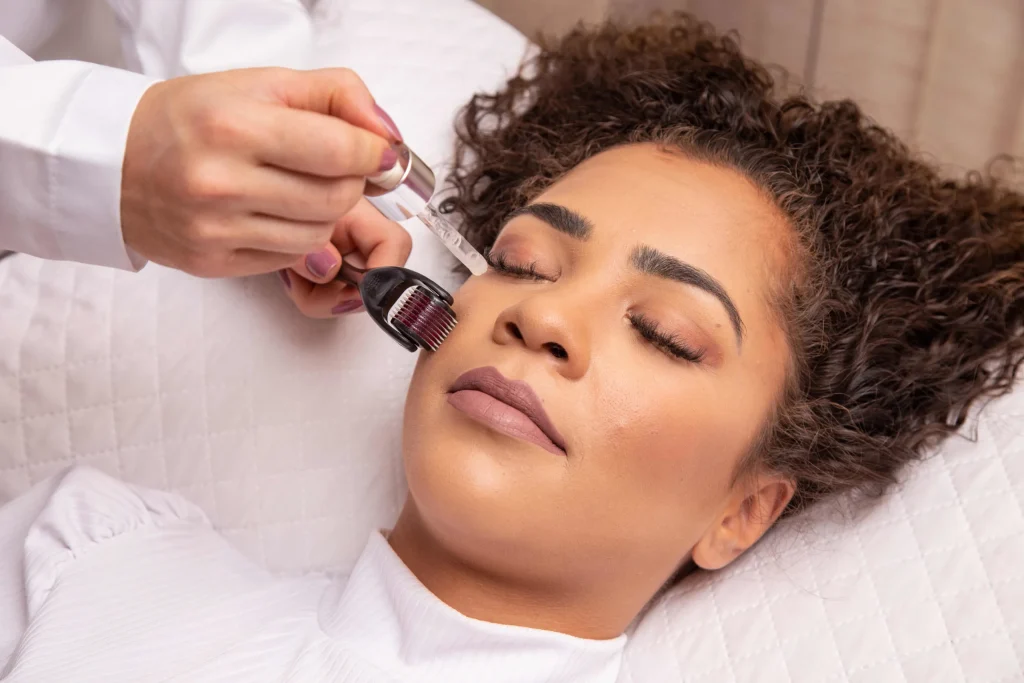
What is Radiofrequency Energy?
Radiofrequency (RF) energy is a form of electromagnetic energy that is commonly used in various medical and cosmetic procedures. In the context of body contouring, RF energy is utilized to target and heat the deeper layers of the skin, promoting collagen production, tightening loose skin, and reducing fat deposits.
During an RF treatment, a device with an applicator is used to deliver controlled RF energy to the targeted area of the body. The RF energy causes the tissues to heat up, which triggers several biological responses. These responses include:
- Heating of collagen fibers: The RF energy heats the collagen fibers in the skin, causing them to contract. This contraction leads to an immediate tightening effect, improving the appearance of sagging or loose skin.
- Stimulation of collagen production: The controlled heat from RF energy also stimulates the production of new collagen over time. Collagen is a protein that provides structure and elasticity to the skin. Increased collagen production can lead to long-term skin tightening and improved skin texture.
- Fat reduction: In some RF-based devices, the energy can also target and heat the fat cells. This heat can cause the fat cells to shrink or break down, leading to a reduction in fat volume. The broken-down fat is then metabolized and eliminated by the body’s natural processes.
RF treatments are typically non-invasive, meaning they do not require incisions or anesthesia. The procedure is generally well-tolerated, though some individuals may experience mild discomfort or a warming sensation during the treatment.
RF energy is used in various body contouring treatments, such as RF skin tightening, RF fat reduction, or combination treatments that address both skin laxity and fat deposits. The specific device, treatment settings, and number of sessions required can vary depending on individual factors, such as the treatment area, desired results, and the device used.
RF energy is often combined with other cosmetic techniques to enhance results. For example, procedures like microneedling Dubai may incorporate radiofrequency to improve skin tightening and collagen stimulation at deeper levels.
It’s important to consult with a qualified healthcare provider or a cosmetic specialist to determine if RF energy-based treatments are suitable for your specific goals and to develop an appropriate treatment plan.
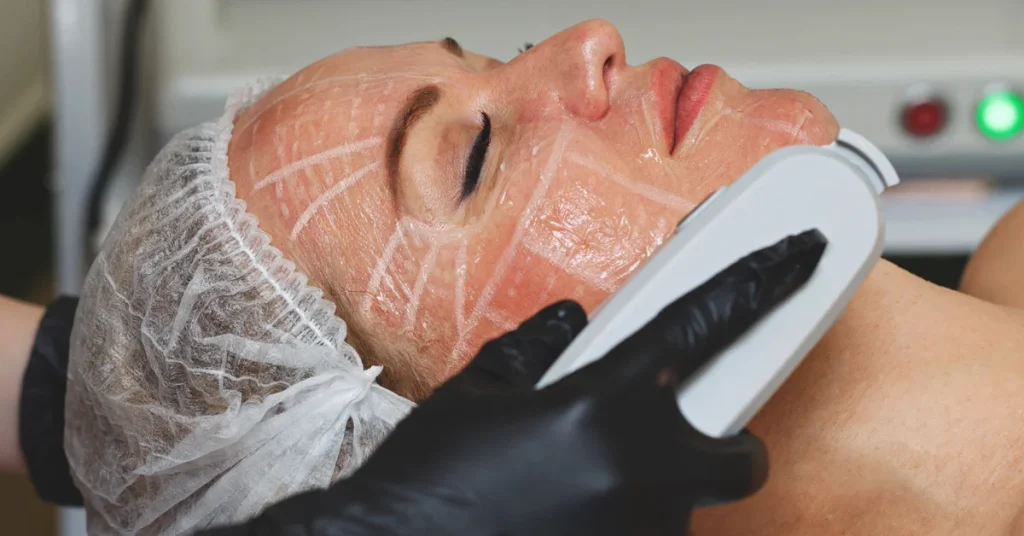
What is High-Intensity Focused Ultrasound?
High-Intensity Focused Ultrasound (HIFU) is a non-invasive medical procedure that uses focused ultrasound waves to target and heat specific tissues in the body. In the context of body contouring, HIFU is used to target and reduce fat deposits or tighten loose skin.
During a HIFU treatment, an ultrasound device with a transducer is used to deliver highly focused ultrasound waves to the targeted area of the body. The waves pass through the skin without causing any damage and converge at a focal point within the body. At this focal point, the ultrasound waves generate intense heat, raising the temperature of the targeted tissues.
The thermal energy created by HIFU has several effects on the body:
- Fat reduction: The concentrated heat can cause the fat cells to heat up rapidly, leading to their destruction or breakdown. Once the fat cells are damaged, they are gradually eliminated by the body’s natural processes.
- Skin tightening: The heat generated by HIFU can stimulate the production of new collagen in the deeper layers of the skin. Collagen is a protein that provides structure and elasticity to the skin. Increased collagen production can lead to skin tightening and improved firmness and texture.
HIFU treatments are typically performed as outpatient procedures, and the duration of each session can vary depending on the treatment area and the specific device being used. Multiple sessions may be required to achieve the desired results, and the treatment plan is often customized based on individual needs.
HIFU is considered a safe procedure with minimal downtime. Most people can resume their regular activities immediately after the treatment, although some individuals may experience mild redness, swelling, or discomfort in the treated area, which usually resolves within a few days.
It’s important to note that HIFU is not a weight loss method but rather a body contouring procedure that is best suited for individuals with localized areas of fat or mild to moderate skin laxity. Consulting with a qualified healthcare provider or a cosmetic specialist is essential to determine if HIFU is appropriate for your specific goals and to develop an appropriate treatment plan.
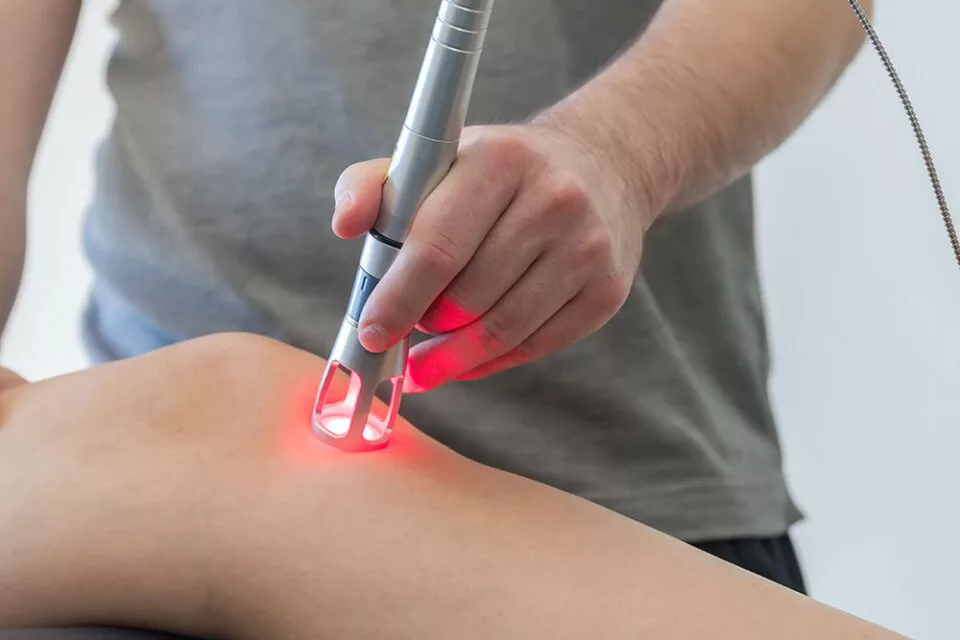
What is Low-Level Laser Therapy?
Low-Level Laser Therapy (LLLT), also known as cold laser therapy or photobiomodulation, is a non-invasive treatment that uses low-intensity laser or light-emitting diodes (LEDs) to stimulate cellular function and promote various therapeutic effects in the body.
LLLT works based on the principle of photobiomodulation, where the light energy is absorbed by cells and triggers a biochemical response. The specific wavelengths and parameters of the laser or LED devices used in LLLT can vary, but they are typically in the red or near-infrared spectrum.
When applied to the body, LLLT can have several effects:
- Cellular stimulation: The absorbed light energy can stimulate cellular metabolism and increase the production of adenosine triphosphate (ATP), which is the energy currency of cells. This, in turn, promotes cellular repair and regeneration.
- Anti-inflammatory effects: LLLT can help reduce inflammation in the tissues by modulating immune responses and reducing the production of pro-inflammatory molecules.
- Improved circulation: LLLT can enhance blood flow and microcirculation in the treated area, which can aid in tissue healing and provide nutrients to the cells.
- Pain reduction: LLLT has been shown to have analgesic effects by modulating pain perception and reducing nerve sensitivity.
In the context of body contouring, LLLT is often used to target fat cells and aid in their breakdown or release. The absorbed light energy can disrupt the structure of fat cells, leading to the release of stored fat into the surrounding tissues. This released fat can then be metabolized and eliminated by the body’s natural processes.
LLLT is typically performed as a series of treatment sessions, and the specific treatment protocol can vary depending on the desired outcomes and the device being used. The treatments are generally painless and non-invasive, and there is usually no downtime associated with the procedure.
It’s important to note that LLLT alone may not result in significant or immediate fat reduction, and it is often used in conjunction with other body contouring techniques or as part of a comprehensive treatment plan. Consulting with a qualified healthcare provider or a cosmetic specialist can help determine if LLLT is suitable for your specific needs and goals.
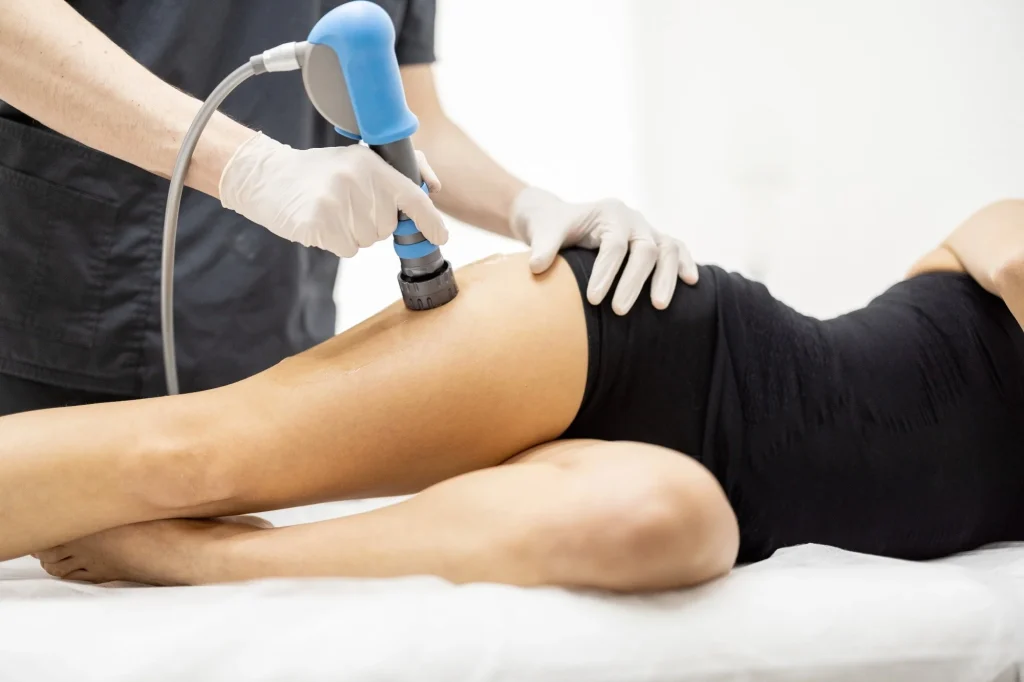
What is Vacuum-Assisted Precise Tissue Release?
Vacuum-Assisted Precise Tissue Release (VAPoR) is a minimally invasive body contouring technique that combines the use of a specialized instrument and vacuum technology to precisely release fibrous connective tissue bands that contribute to the appearance of cellulite.
Cellulite is a common cosmetic concern characterized by dimpled or lumpy skin, typically found on the thighs, buttocks, and other areas of the body. Fibrous bands of connective tissue pull down on the skin, creating the characteristic dimples. VAPoR aims to release these fibrous bands and improve the overall appearance of cellulite.
During a VAPoR procedure, a small, needle-like instrument is inserted into the skin through tiny incisions. The instrument utilizes a combination of mechanical cutting and vacuum-assisted suction to target and release the fibrous bands. The vacuum helps lift the skin and draws the fibrous bands closer to the instrument for precise cutting. By releasing the tension caused by the fibrous bands, the skin can appear smoother and reduce the appearance of cellulite.
VAPoR is typically performed under local anesthesia, and the procedure can be completed in a single session. It is considered a minimally invasive technique with minimal downtime. Some individuals may experience temporary bruising, swelling, or soreness in the treated area, but these side effects generally resolve within a few days to weeks.
It’s important to note that VAPoR is intended for the treatment of cellulite and is not a weight loss procedure. The results can vary depending on the severity of cellulite and individual factors. Consulting with a qualified healthcare provider or a cosmetic specialist is crucial to determine if VAPoR is suitable for your specific concerns and to discuss the potential benefits and limitations of the procedure.








